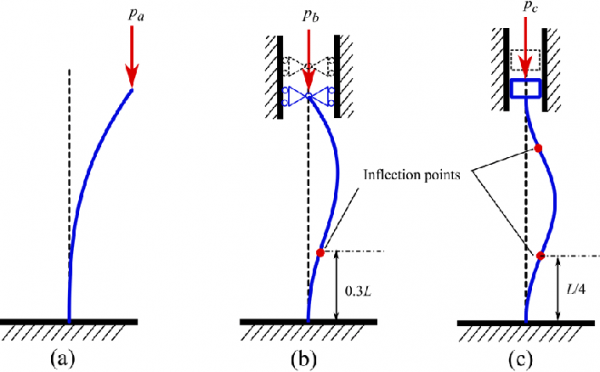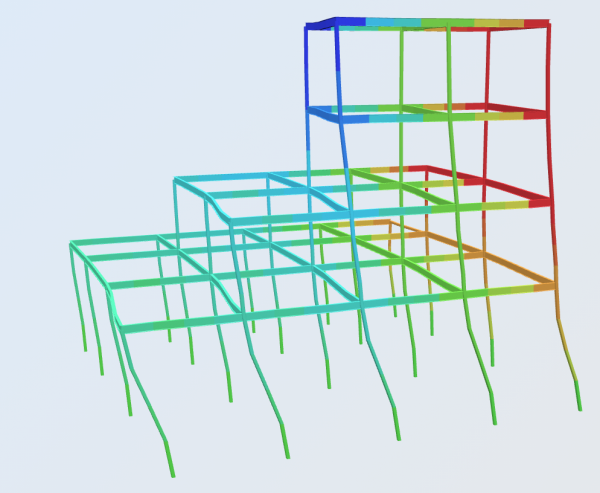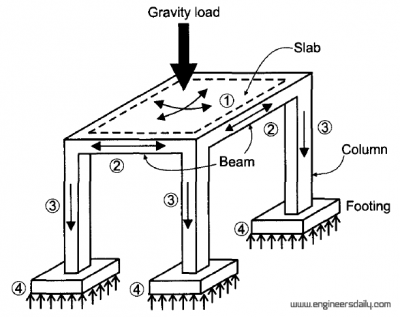Levels of Analysis
Structural Analysis 1 - Determinate Analysis
Based on the principles learned in statics, Structural Analysis 1 serves as the basis for all structural engineering principles. The course is split mostly between solving determinate systems using statics, and looking at topics relating to mechanics (stress, strain, materials, deformation, etc). At the end of this course, students should be able to establish equilibrium equations for simple structures, understand support and release types, and find membrane force diagrams.Structural Analysis 2 - Indeterminate Analysis
Structural Analysis 2 takes it a little further by focusing on more advanced mechanics and solving indeterminate systems. This course is where ideas like virtual work, slope deflection, and moment distribution methods of solving indeterminate systems are introduced. The advanced mechanics learned here include the ideas of torque, buckling, combined stresses, and plastic deformation. In this course, real-world context is introduced so students can distinguish things like gravity vs. lateral loads or the different types of connections (pinned, fixed, etc).
Figure 1: depiction of buckling shape in columns with different end conditions (researchgate.net)
Structural Analysis 3 - Matrix Analysis
In this course, students are primarily learning about the application of matrix algebra and virtual work to large-scale structures, while simultaneously being introduced to structural analysis software in the industry. Because structural software is very commonly used in practice, students being able to understand how stiffness methods are used in software to get large-scale analysis helps transition them from the classroom to the office. Luckily for students, NCSEA recommends only a simplified version of the matrix analysis by hand to help illustrate what the software is doing behind the scenes.
Figure 2: depiction of deflection/analysis results using matrix analysis on SkyCiv Structural 3D
Structural Dynamics
This course focuses on loading scenarios that are dynamic. These advanced loading mechanisms include the very large topic of seismic loads and responses, as well as uncommon loads like blast loading, pedestrian loads, etc. Using these dynamic loads, students learn how to find the dynamic response of the structure itself. Also, there is significant effort to learn about the different lateral force resisting systems and their reactions to these dynamic types of load. Overall, this course is very important for engineers that participate in design where seismic activity is prevalent and is therefore commonly governing as a lateral load case. The SkyCiv platform gives new and experienced engineers the tools to obtain nearly any analysis type for their structure, ranging from linear static through response spectrum and dynamic frequency. Check out these different analysis types here.Additional Coursework
Load Path in Structural Systems
Not necessarily a specific course, but more so a general idea that needs to be learned throughout the structural engineering coursework. Learning to systematically and instinctively follow the load path from any location on the structure is important because of the engineering assumptions that need to be made in practice. Also, students and engineers need to consider the differences in load paths among different structural systems under the same load.

Figure 3: Simple load path of a suspended concrete slab (www.engineersdaily.com).
It's easy to see how current structural engineering students would not be able to fit it into a 4-year degree (and the design coursework wasn't even listed here), which is partially why this growing trend of advanced degrees exists. As the industry continues to innovate with technology and material advancements, more and more topics will need to be covered for graduate-level structural engineers to be completely ready for the workforce. Make sure to read the second article highlighting the different design coursework as well.Sources
- Dong, Kevin. “NATIONAL COUNCIL OF STRUCTURAL ENGINEERS ASSOCIATIONS RECOMMENDED STRUCTURAL ENGINEERING CURRICULUM.” NATIONAL COUNCIL OF STRUCTURAL ENGINEERS ASSOCIATIONS, www.ncsea.com/downloads/committee/docs/.
- Fasano, Anthony. “Ask Anthony: Get a Master's Degree in Civil Engineering or an MBA?” Civil Engineering Source, 29 July 2016, source.asce.org/ask-anthony-get-a-masters-degree-in-civil-engineering-or-an-mba/.
- “NCSEA Education Committee.” NCSEA Committees, www.ncsea.com/committees/basiceducationcommittee/


